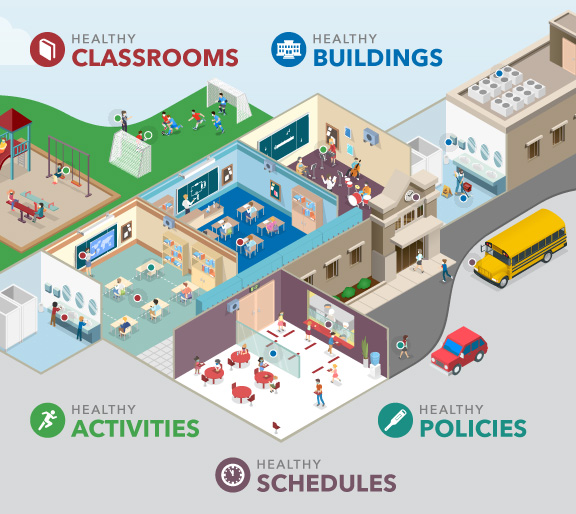
Keeping schools closed comes with massive, long-term individual and societal costs. Many children cannot effectively learn, grow, engage, socialize, be active, eat healthy food, or get support until schools reopen. With schools closed, disparities are widening across racial and ethnic groups, between women and men, and across income levels. Many parents and caregivers cannot fully go back to work until children go back to school.
Children are at much lower risk from COVID-19 than adults and a growing body of scientific evidence shows that kids and adults can be kept safe in any indoor environment, including schools, if appropriate risk reduction measures are implemented. With this as the backdrop, we set out to answer this question: what strategies should schools consider to reduce risk of COVID-19 transmission?
However, scientific evidence indicates that risks to students and staff can be kept low if schools adhere to strict control measures and dynamically respond to potential outbreaks.
We recognize there are immense challenges. There is no perfect plan to reopen schools safely, only ‘less bad’ options. There is no ‘one size fits all’ strategy that works for every school. Schools have limited budgets and staff. Compliance may be imperfect. Learning will be different. There will be disruption. Schools may need to change course unexpectedly depending on local conditions.
Despite these challenges, the enormous individual and societal costs of keeping schools closed compels us, a team focused on Healthy Buildings and exposure and risk science, to present a range of control strategies that should be considered in discussions of school reopenings:

Following safe practices in classrooms.

Breathing clean air in the school building.

Building a culture of health, safety, and shared responsibility.

Moving between rooms and locations safely.

Enjoying modified activities.
These strategies work together as part of a holistic, multi-layered plan to reduce exposure to and limit transmission of COVID-19 in schools. Schools should adopt and adapt these recommendations to best fit their unique situation, depending on available personnel, resources, finances, school demographics, and building attributes. In addition, schools should frequently revisit their approach as the COVID-19 situation changes over time in each community.